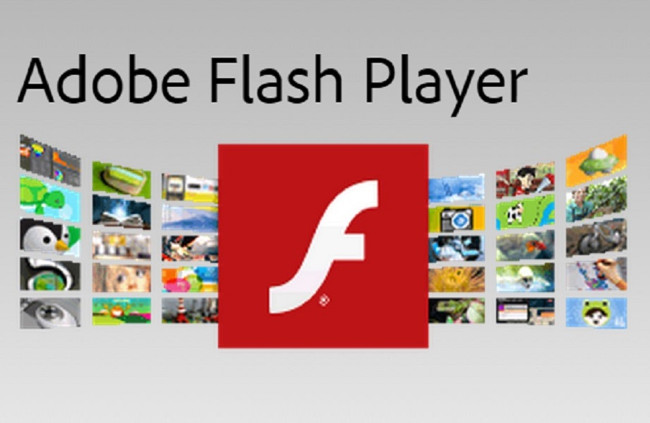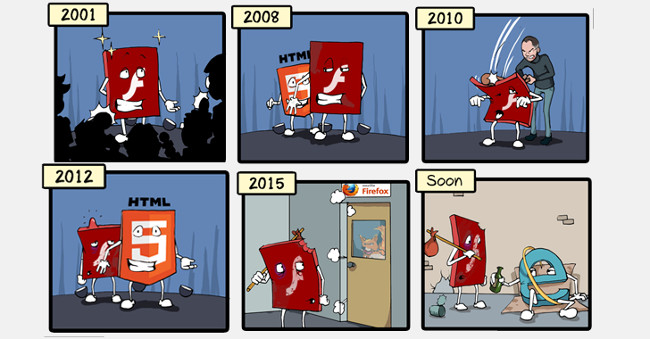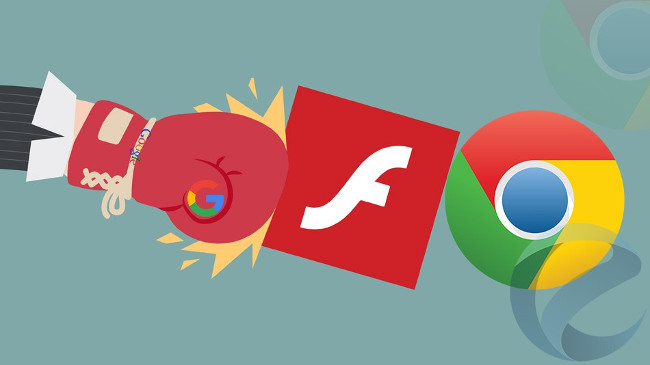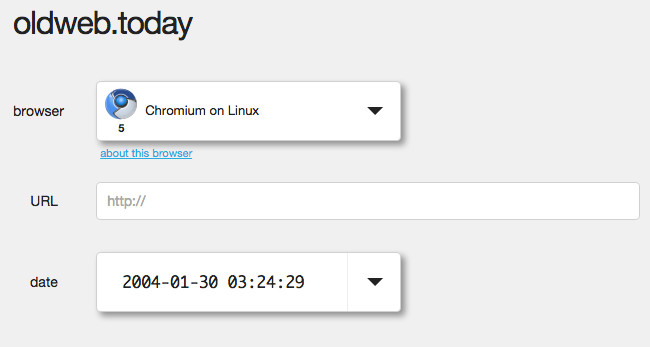Journey from the face of the Internet to the stepchild is forgotten
Emerging from the 1990s, the Internet was in its infancy with most of the interesting things you can find on websites that are either low-resolution GIF images or simple flashing words, Adobe Flash considered the future of the Internet, until it was pushed down to the brink like today. It is Flash that makes video, animation and interactive movements popular on the internet, allowing developers and designers to build content-rich websites that can run smoothly on any computer or browser. Come on. But now, people have to wonder where Adobe has taken Flash?
1. Looking at the past

Considering the bulletin-board systems are "back-to-back", childhood chat rooms Flash will be the youth of the Internet - when it is still "freak" and rebellious like any other boy any teen today. Flash is not just a tool or a technology, but rather a separate category.
- Instructions on how to install Adobe Flash Player on your computer
- Instructions for installing Adobe Flash on Vivaldi browser
Adobe Flash originated with the original software called FutureSplash Animator. Launched in 1995, FutureSplash Animator is expected to be able to combine animation content with vector graphics to become an alternative to web-based Java developers.
In 1996, this software was acquired by Macromedia. The name "FutureSplash" is also shortened to "Flash". The goal of Flash software is to help create animation and richer interactive content for the Internet.
But it was not until the 4th Flash version of 1999 that the software actually added features after the most significant upgrades in scripting language. It can be said that ActionScript - the programming language associated with Flash - is one of the most important factors that helps Flash become popular. This is also when Flash started to explode.
2. The period of light flashes
 Homestar Runner game interface
Homestar Runner game interface
Animation and short video games using Flash have flourished in the early 2000s. You can easily identify them through the clear differences in design compared to traditional media. The world has never seen games like Homestar Runner or QWOP before Flash appeared.
In the early 2000s, developers really had no better solution than Flash in supporting multimedia communications on different browsers. Most users who install a new browser version have Flash Player installed (it may still be true today). Instead of supporting 2-3 different file formats, you can "pack" everything into a .swf file to embed it into the site and handle the backend content. The most popular site that uses Flash Player is YouTube, the video platform that appeared in 2005. Each video uploaded to YouTube is converted into an FLV file and then passed through a Flash video player. As a result, video content can be protected from anyone who wants to download it directly, but at the same time allows anyone to view it. In fact, most video sharing sites, even site animation and music sharing, follow this same prototype when it first launches.
Ironically, in 2005, Macromedia was taken over by Adobe Systems. Flash, along with Dreamweaver and Fireworks, took turns on this big guy. Thanks to that deal, Flash is synced to Adobe's toolkit. Developers can easily transfer files from software like Illustrator to Flash project . Flash's technology has gone far beyond its original goal of animation (animation) to reach wide coverage as an indispensable tool when designing elements on the web interface.
3. Leaving Mobile

HTML5 is now supported by almost all phones in the world. This has made HTML5 the best solution for creating and deploying content for browser programs across Mobile platforms.
The trend of using Flash in multimedia communications probably continues until the period of 2010-2011. But in late 2011, Adobe abruptly announced cancellation completely support for mobile browsers. Since Apple decided not to support Flash on the iPhone (2007), struggling to keep up with dozens of chipsets on Android devices has become overwhelming with Flash. Adobe simply wants to focus more on the PC browser as well as develop animation support features for games and high-definition video.
Many technology experts say that this is the beginning of Flash's long slide because immediately, HTML5 is emerging with great potential.
Appearing in the era of smartphone boom with clear mobile orientation, HTML5 has quickly received the favor of many developers around the world. They have simultaneously switched from Flash to HTML5. Although there are still big "rear" like video sharing platforms and Facebook's Flash game world, Flash cannot "flash" web developers about their shrinking coverage.
When the trend of using HTML5 was so wide that it could not be denied, along with the death notification that supported the mobile browser, Adobe did not forget to send a painful message: " HTML5 is now almost all kinds. phones around the world support this, making HTML5 the best solution for creating and deploying content for browsers across mobile platforms ".
4. On the verge of death

A few years later, HTML5 and related technologies continue to dominate the web world. In early 2015, YouTube's No. 1 video network was forced to announce the selection of HTML5 video player as the default site. Only a few months later, the hacker took advantage of the flaw in the Flash Player plugin to install spyware on a leaked user's computer. Facebook's security director even wants to stop using this plugin permanently. A series of Flash security flaws were revealed later that raised concerns for the remaining loyal users.
Facebook's (browser) game ideals were the last stronghold but it turned out this social network was not the only giant to play Flash's future decisive role. Earlier this month, Google also announced a new change on the Chrome browser that defaults to Flash blocking. Users will still be able to access Flash content by clicking on the preset button, but this still shows that Chrome - the world's largest browser - also has a built-in bomb that breaks down Flash support. And until that day, playing games or watching Flash animations on Chrome will be no different than trying to run cassettes when there is no radio.
5. Conservationists

The question now is: How to preserve Flash content if users cannot load them later ?
Flash content developers can update their products to more modern formats - such as animating and animation into videos and putting their vector graphics on programs like Adobe Illustrator. Video games are more complex but can also be saved as programs that run on Windows and OSX.
However, conserving websites built entirely on Flash with buttons, text or animation, is a more difficult task. Unlike animation and games, websites are usually not considered separate products - meaning that once they are updated their older versions will be overwritten. The future of such websites may only depend on Internet conservationists.
This effort has been done by many people. The conservation group behind oldweb.today has attempted to help users access sites from the "ancient" era on an IE simulation interface that allows viewing Flash content across browsers that have stopped supporting it. . Oldweb.today said that even running Flash on a simulated browser has already encountered a number of technical difficulties. The effort to collect and conserve Flash content is an unequal journey, but it is also necessary as much as archaeological work to keep civilizations that have fallen into the past.
Flash may not be completely a dead technology; The Flash Player plugin is also still attached to Mac and PC computers. But from what we have seen, HTML5 video and audio support has opened new standards, allowing web developers to stay away from Flash's inherent limitations. With extensive support on most smartphones and PCs, it is clear that HTML is more likely to become the perfect successor of Flash in the future.
You should read it
- How to check the Adobe Flash Player version in the browser
- Instead of killing Flash, we should save it for posterity
- How to completely remove Adobe Flash on a Mac
- The painful and prolonged death of Flash
- Adobe said goodbye to Flash Media Player by 2020
- Instructions for troubleshooting Flash Player crash (crash) in the browser
 Experience the Microsoft Surface Studio All-in-one, rival of the iMac
Experience the Microsoft Surface Studio All-in-one, rival of the iMac Bill Gates and Mark Zuckerberg share their passion for programming
Bill Gates and Mark Zuckerberg share their passion for programming